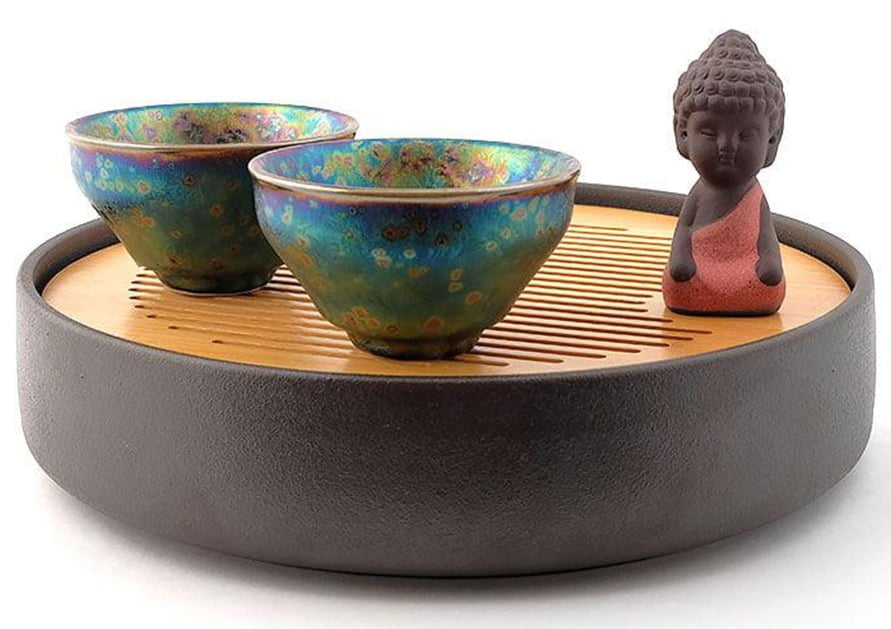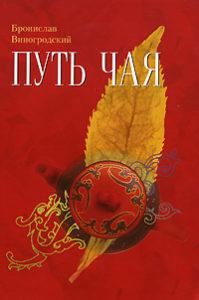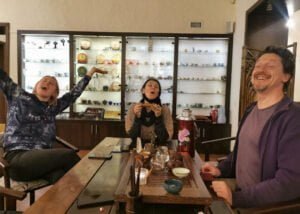It is as if all the secrets of the cosmos and the stars are captured in this beautiful product. You hold a tea cup in your hands, take a sip of fragrant tea, look at the pattern… and your imagination draws the moment of creation of the universe, the explosion of a supernova, infinity….
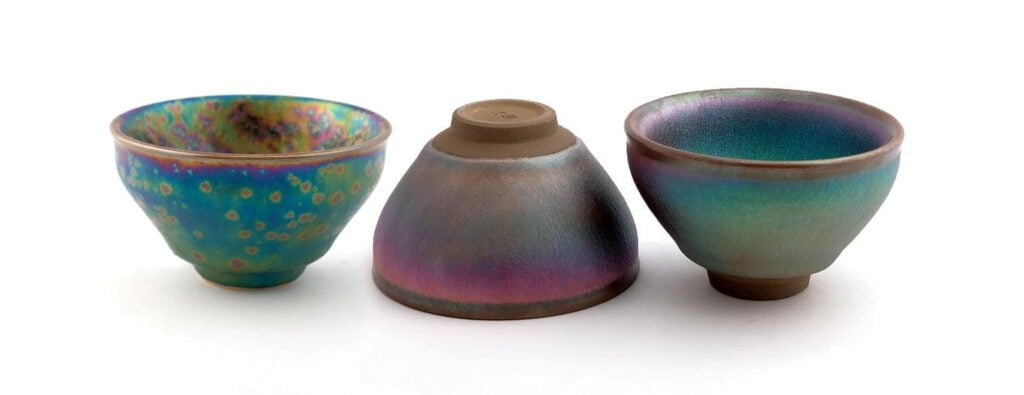
Temmoku bowls, emerged from the earth and baptized by fire, are filled with energy, mystery and shimmering light. Tammoku is a type of iron glaze for pottery, an ancient cultural relic from China that is still deeply revered in Japan today.
Let us take a short journey through time to learn a little more about these unique pieces.
The first literary mention of a tammoku bowl dates back to 903-907. The name “temmoku” comes from the Japanese reading of China’s Tianmu Mountain (Fujian Province), where monks produced and used pottery with a similar glaze. Temmoku bowls were most popular in China during the Song Dynasty (960-1279). In Chinese tea history, this time was marked as the “era of powdered tea”. Pre-steamed tea leaves were ground into fine powder in stone mills. Boiling water was poured into a bowl of powdered tea, then stirred with bamboo brushes so that the tea and water combined to form a foam.
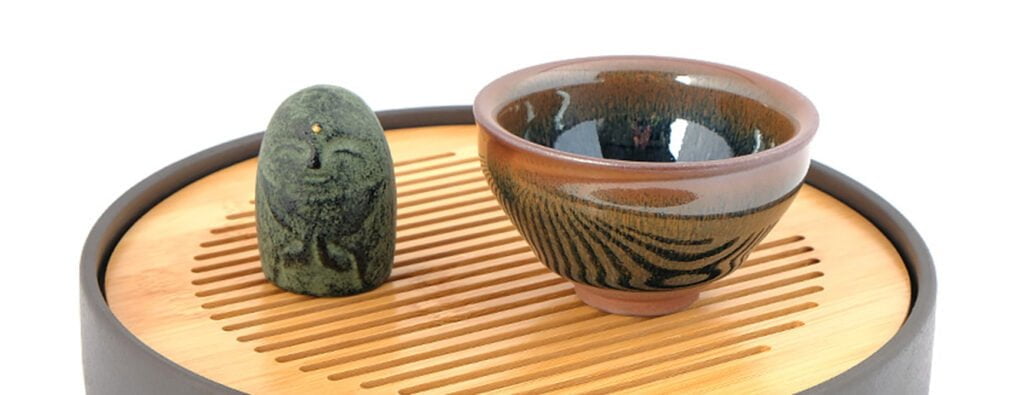
Tea was a daily integral part of the life of Zen monks. Of course, as the monks passed on the Zen teachings, they also spread the tea culture.
Thus, the first tea cups, tea and its preparation method came to Japan in the Kamakura era (12th century).
The production of tammoku in China was interrupted in the 13th century. The Celestial Empire was undergoing raids by the Mongols. The onset of the Yuan dynasty affected many things. The leaders of the Yuan were nomadic Mongols who ate mostly meat and dairy products. They also drank tea in a different way. There was no need for temmoku bowls. In place of the kilns of the famous Fujian potteries, only piles of shards remained…
As paradoxical as it may sound, but…. Fortunately, typhoons kept Japan safe from the Mongols. Japan was able to preserve the traditional tea art of the Song Dynasty, which later became an integral part of Japanese culture.
According to 15th century Japanese archives, the favorite bowls of royalty and aristocracy were those that reflected shimmering light. Temmoku were very popular during the Kamakura and Muromachi periods (1185-1573).
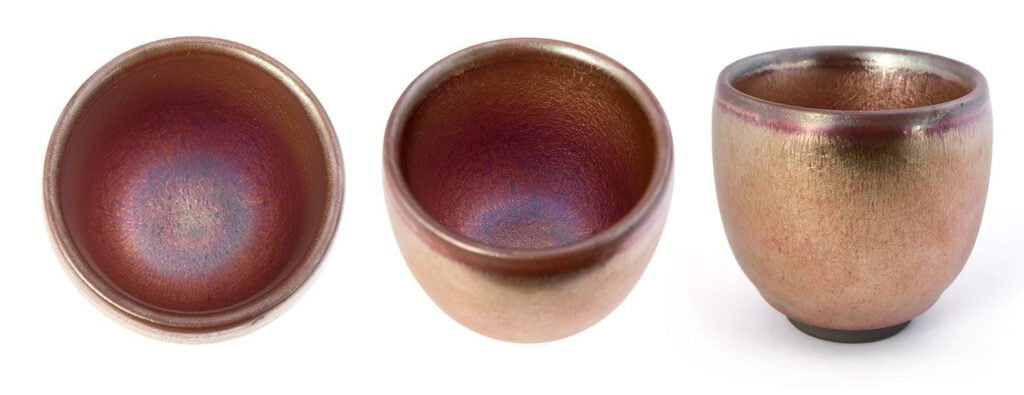
The art of ceramics began to develop in Japan in the 17th century. But Chinese ceramics is a treasure cherished by Japanese museums and numerous personal collections.
Temmoku bowls are of the highest importance in the Japanese tea ceremony.
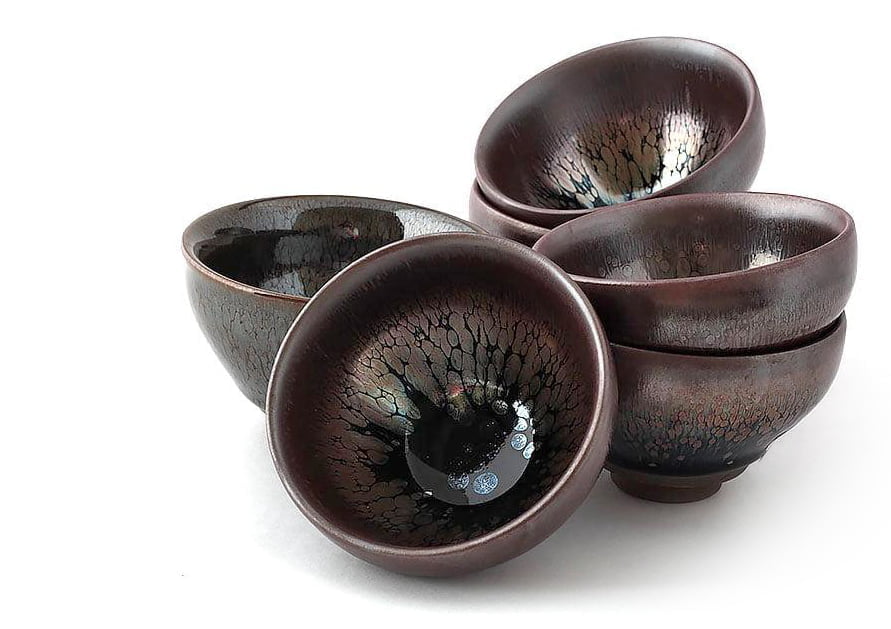
What was so special about temmoku bowls? First of all, they were attractive because of their perfectly correct shape and exceptionally thick black glaze. The rim of the top edge of the bowl was often decorated with gold or silver.
Tammoku glaze contains 5-7% iron. This is what gives the ceramics their unique metallic luster.
In kiln firing, the pieces are quickly heated and then quickly cooled. During this process, the iron crystals interact with oxygen to form a variety of patterns. It is never known exactly how the pattern will turn out in the end. This is why temmoku is also called “the art of elusive glazes”.
In addition, the metal-based glaze used in temmoku is also designed to maintain a constant temperature. The shape of the bowl (funnel) also serves the same purpose. And the thick walls of the bowl also slowly release heat, keeping the tea at a constant temperature.
After centuries, temmoku still remain at the forefront of the vast array of tea ceramics of the highest caliber. They delight connoisseurs and connoisseurs of the art of tea bowls with their perfection.
Perhaps the essence of temmoku is closeness to the heavenly. It is not for nothing that the Japanese word for tammoku is “heavenly eyes”. After all, what else can simultaneously and so poetically convey the aroma, taste, color of tea and the beauty of a starry night!
Author of the article Katerina Obertos (Epikhina)
